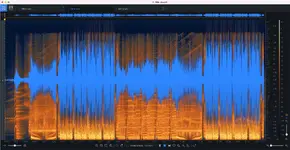B
brianmedd
New member
Hi HomeRecording.com,
I've made this account to ask you guys about a problem I've been having since day 1 once I got the new MacBook Pro M1 Pro.
I have noticed a LOT of clipping when sound gets loud / peaks, but I can't find the solution to this. The problem especially occurs when listening to (what I have found) one song by Snavs on SoundCloud ( ).
Throughout the whole drop, the sound is so distorted, it is unbearable to listen to.
PS's:
- This happens in both Safari and Google Chrome.
- I'm using M-Audio Air 192/4 with the belonging USB-C.
- I have set the audio to 48.000 Hz (standard) and tried 44.100 Hz and so on, but nothing changes.
- I have tried to plug the USB-C in all three Thunderbolt outputs on the MacBook.
- I'm using KRK Rokit 5 G4 as monitors with balanced XLR.
EDIT EDIT: This does not happen when listening on the MacBook speakers.
Hopefully you can help!
Best regards,
brianmedd
I've made this account to ask you guys about a problem I've been having since day 1 once I got the new MacBook Pro M1 Pro.
I have noticed a LOT of clipping when sound gets loud / peaks, but I can't find the solution to this. The problem especially occurs when listening to (what I have found) one song by Snavs on SoundCloud ( ).
Throughout the whole drop, the sound is so distorted, it is unbearable to listen to.
PS's:
- This happens in both Safari and Google Chrome.
- I'm using M-Audio Air 192/4 with the belonging USB-C.
- I have set the audio to 48.000 Hz (standard) and tried 44.100 Hz and so on, but nothing changes.
- I have tried to plug the USB-C in all three Thunderbolt outputs on the MacBook.
- I'm using KRK Rokit 5 G4 as monitors with balanced XLR.
EDIT EDIT: This does not happen when listening on the MacBook speakers.
Hopefully you can help!
Best regards,
brianmedd
Last edited:


